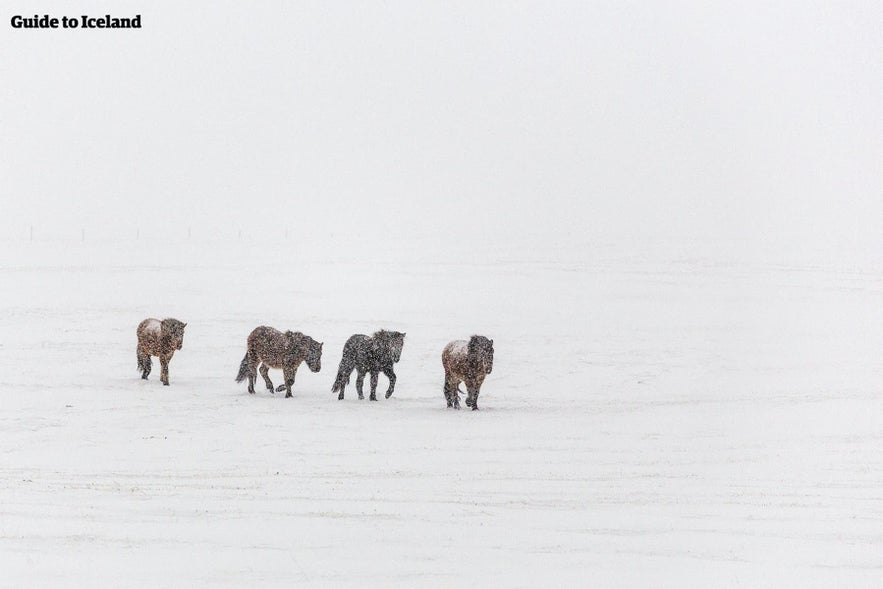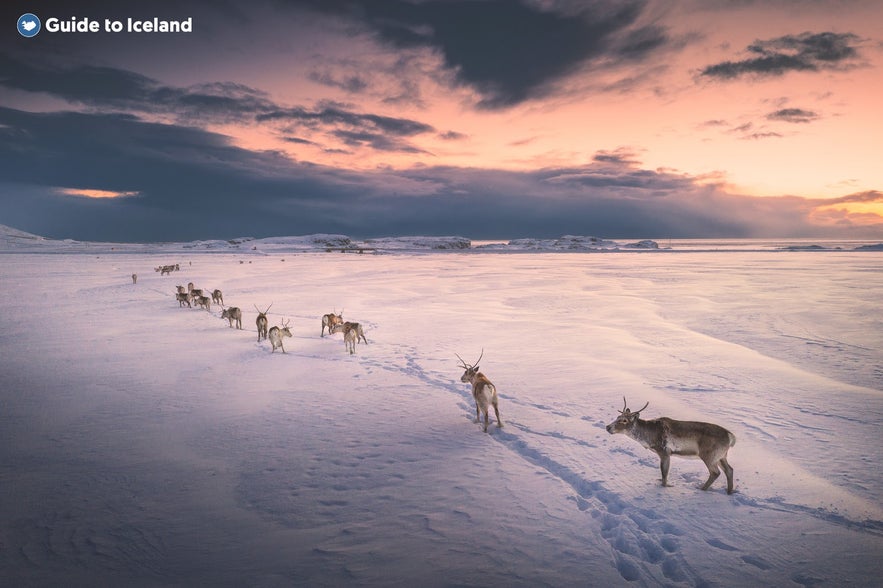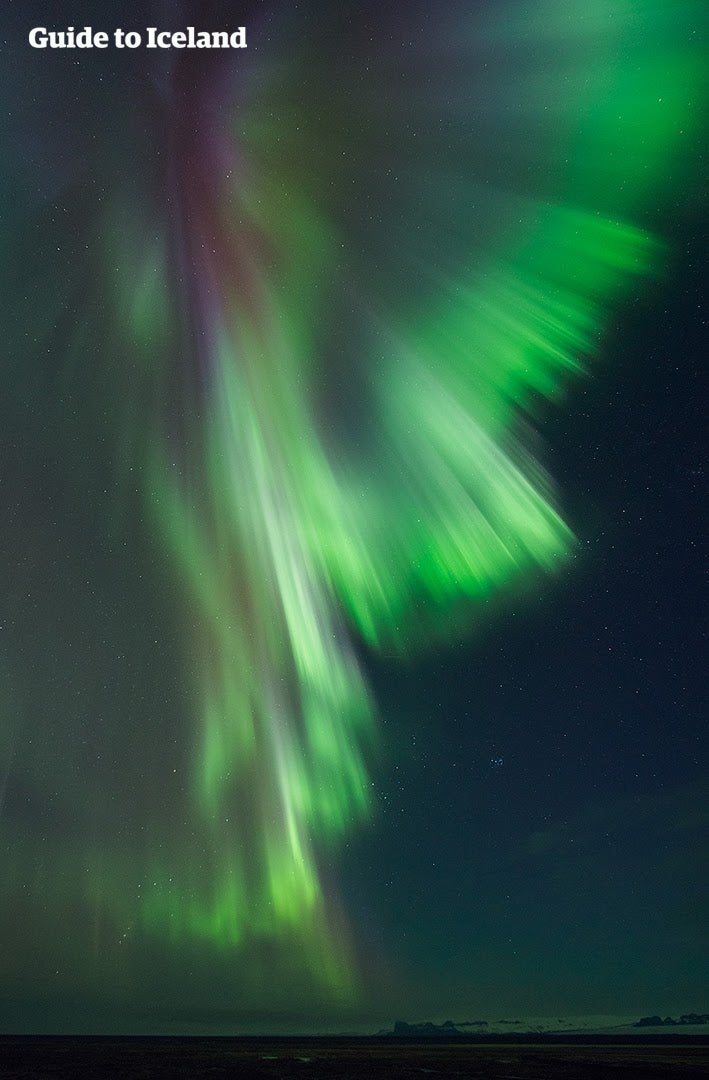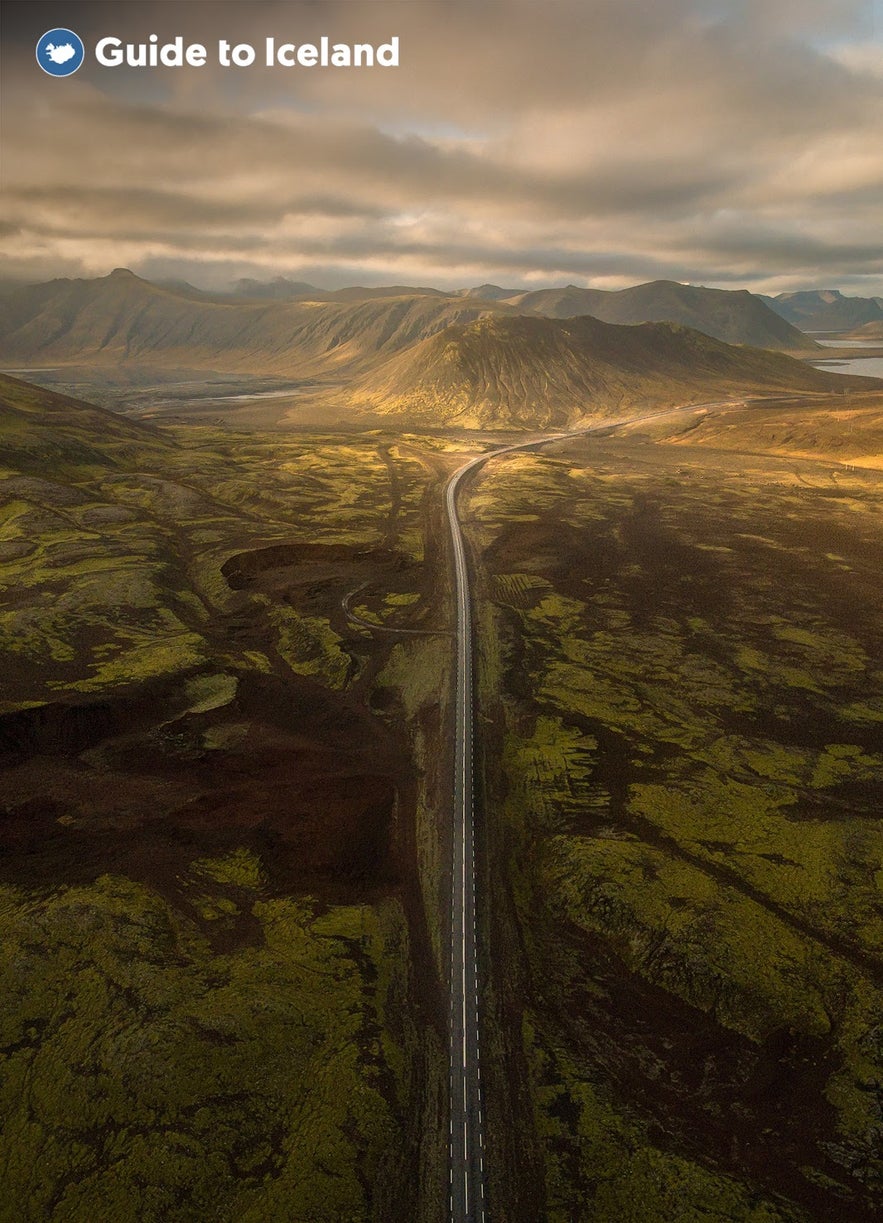
The Ultimate Guide to Iceland's East Fjords

What are the greatest attractions of Iceland’s East Fjords? What is the best way to get the East Fjords of Iceland, and when is the best time to go? Are there many tours and adventures that can be enjoyed in the region? Continue reading for all you need to know about the Icelandic East Fjords.
On the far side of the country from Iceland’s bustling capital is a little-known region overlooked by the vast majority of visitors. The East Fjords may be remote and require some effort to reach, but those who choose to seek out this seldom-visited area find themselves richly rewarded.
If you want to get to know this region on an organized tour, check out the wide selection of Eastfjords tours that you can embark on. If you're stopping by in the region or want to take your time to explore it, we recommend booking a hotel in East Iceland to ensure yourself a place to stay during your travels.
Glistening seas, plunging bays, towering mountains, sparkling ice caps, and an endless array of unique natural attractions are all on offer here, but what truly makes the East Fjords so special is their isolation.
Most come to Iceland seeking to explore the untouched wilderness without another soul in sight, and nowhere else in the country is such a dream so easy to bring to fruition.
While nowadays it would be somewhat of a miracle to witness the sites of the Golden Circle and South Coast without at least one other group of tourists, travelers to eastern gems such as Borgarfjörður Eystri or Mount Snæfell will often find themselves exploring with nothing but their stunning surroundings for company.
It is not just the landscapes and features, nor their remoteness, that make the East Fjords a unique part of Iceland, however. It also has some of the most diverse wildlife in the country, being the only place you can find wild reindeer and one of the most reliable places to locate whales, dolphins, seals, and even puffins in summer.
Furthermore, its rural culture is fascinating, and there are a wealth of places where you can witness how historical traditions and folklore continue to play a role in daily life.
In short, the East Fjords of Iceland are a place that all guests should highly consider when planning a holiday.
Most who make their way here do so by renting a car and taking an adventure around the country’s Ring Road. It is, however, possible to organize a trip solely to this region by making the most of the country’s domestic airports, an increasingly popular option for those who have been to Iceland before.
Before embarking to the East Fjords of Iceland and setting out to witness its awe-inspiring sites, however, you’ll find a little planning goes a long way.
Knowing where you can find its natural attractions, cultural sites, significant settlements and the departure locations for tours will allow you to tailor a trip to your group’s desires and make the most of every day.
Furthermore, practical information about the weather in the East Fjords and its road conditions are useful for all travelers.
If you are eager to visit the East Fjords but find the thought of planning your trip a little overwhelming, there are plenty of self-drive holidays and vacation packages that will organize all the details for you that focus on the region.
An 11-day summer self-drive, for example, will provide you with time in the East Fjords and an itinerary of some of the greatest places to see there. On an 8-day summer holiday, you’ll be led around the sites by a knowledgeable guide.
Attractions in Iceland’s East Fjords
The Icelandic East Fjords are often discussed as an incredible attraction in and of themselves. Though each bay and mountain has a name, they collectively form one of the most beautiful places on earth. Many guests thus traverse this area with very little plan and still find that each detour takes them to a new, awe-inspiring location.
Those who prepare for their visit, however, will find themselves grateful for their effort. Most of the region’s attractions remain hidden gems that plenty of visitors completely overlook, providing those who seek them out with a more intimate experience.
Furthermore, many of these places are steeped in folklore and history, providing you with a fascinating cultural context that will peel another layer off of Iceland’s mystery.
- Discover the Top 12 Towns to Visit in the East Fjords
Attractions between Hofn and Egilsstadir
The southern edge of Iceland’s East Fjords is considered to start just after the town of Höfn.
Many guests embarking on a Ring Road journey will stay here due to its great location between the final major attraction of Iceland’s South Coast, the mesmerizing Jökulsárlón Glacier Lagoon, and the east.
It also attracts guests on its own merit due to the dramatic nearby mountain of Vestrahorn, the scale, composition and surroundings of which make it a favorite subject for photographers.
As soon as you begin to travel from Höfn, you’ll immediately be immersed in the incredible landscapes that this region offers.
While the coastline behind you was flat and sandy, being a glacial outwash plain, it will quickly become that of dramatic fjordlands, with steep-sloped mountains curving around plunging bays.
The first major attraction you will come to is another mountain strikingly similar to Vestrahorn, the equally beautiful Eystrahorn; a short while after that, you’ll reach the village of Djúpivogur.
Though all settlements in Iceland have an enviably relaxed way of living, none pride themselves on it more than those residing here; coastal hot pools form the perfect place to get into the local spirit.
Those with an interest in art can also enjoy a lovely walk along the shoreline to admire a row of public sculptures titled ‘The Eggs of Merry Bay’.
If you plan to stay in accommodation in Djupivogur during the summer, you can use the chance to take a boat to the island of Papey. One of the best places in the country for puffin-watching, you’ll be able to get surprisingly close to these adorable birds as they guard their burrows and go about their business.
Their fearlessness comes largely from the fact that Papey has been deserted for decades, a fact that also creates a mystical air of windswept abandonment.
Continuing north from Djúpivogur along Route 1, you’ll wind up and down some spectacular fjords, such as Berufjörður and Stöðvarfjörður. While marveling over the views, be sure to keep an eye on the waters for any sights of marine life, and inland for any reindeer.
You’ll find these fjords usually have just one tiny fishing village nestled in them, where you can find basic services and marvel over their idyllic surroundings.
One of these villages, Breiðdalsvík, is well worth a visit due to its beautiful black sand beach and the fact that it sits by Breiðdalur Valley, framed by towering snow-capped peaks. You can find some nice accommodation in Breiddalsvik and enjoy a stay in the longest and widest valley in the region.
At the fjord of Fáskrúðsfjörður, Route 1 will turn inland to head to the capital of the east, Egilsstaðir; Route 955 continues along the coast, heading to the beautiful Vattarnes Sea Cliffs, which provide a great perspective over the East Fjords.
An enticing attraction on the northern side of the adjacent fjord is Hólmanes, a Nature Reserve with several spectacular hiking trails.
Attractions Near Egilsstadir
North and east of Hólmanes, the mountains become particularly steep and impregnable. To explore the rest of the Icelandic East Fjords, it is thus necessary to return to the Ring Road and head to Egilsstaðir, where you can return to the coast via Routes 93 and 94.
Egilsstaðir, however, warrants a visit in its own right, largely due to its beautiful surroundings.
It sits on the banks of Lagarfljót, a serene lake that is steeped with folklore, and just to its south is the country’s largest forest Hallormsstaðaskógur. Both of these idyllic locations are fantastic escapes for those who enjoy hiking and birdwatching.
Just north of Egilsstaðir, immersed amongst another stunning lake, is the only geothermal spa in East Iceland. The Vök Baths boast two heated, mineral-rich pools level with the waters, as well as a sauna, making them a fantastic spot to unwind during an action-packed sightseeing adventure.
In spite of the remoteness of the region, it is still recommended to book admission here in advance, just in case.
Egilsstaðir is also the starting site for many of the tours that will allow you to immerse yourself in the interior of the east.
As you navigate the fjords, you’ll catch views of many incredible attractions, such Mount Snæfell, the Highlands and Vatnajökull glacier, and the easiest and most enjoyable way to access them is on excursions from town.
Attractions in Iceland’s East Fjords North of Egilsstadir
Taking Route 93 out of Egilsstaðir will take you to Seydisfjörður, a charming village in a spectacular fjord of the same name.
This area is packed full of incredible natural attractions; it boasts two of the country’s most impressive mountains, Bjólfur and Strandartindur, as well as the fascinating reserve of Skalnes.
Skalnes has appeal to those with passions for both nature and history. It has a diverse range of flora, many seabirds nest in the area, it is often frequented by reindeer herds, and its waters are home to seals, porpoises and dolphins year-round.
It also boasts over 90 archaeological sites from World War Two, when it was fortified should Iceland be attacked by the Axis powers.
Route 94 from Egilsstaðir, meanwhile, will take you to the legendary landscapes of Borgarfjörður Eystri.
This magical location is a hiker’s paradise, with countless trails leading into the nearby Dyrfjöll mountains. The most renowned of these takes you to Stórurð, a range whose name translates to ‘the giant boulders’.
Jagged peaks contrast beautifully with the serene surrounding meadows, and you can even find a small glacier overlooking the site. Though the trail here is challenging, those who embark on it will be rewarded with some of the country’s best views.
Also near Borgarfjörður Eystri is the rock formation of Álfaborg, said to be the fortress of the queen of the Hidden People.
These mysterious characters of Iceland’s folklore are as haunting as they are fascinating, and there are few places where you feel their otherworldly presence so intimately. Álfaborg also boasts excellent views of the ocean and a nearby birdwatching area.
As you continue along the East Fjords from Borgarfjörður Eystri, you will soon come to the incredibly remote farm of Húsey.
Another great place for hikers, there are two trails that will expose you to a wealth of diverse landscapes and present you with more incredible seal and birdwatching opportunities.
The next settlement is the tiny, far-flung Vopnafjörður, though you can take a short detour inland before reaching it to visit the turf houses at Bustarfell.
Now a museum, these turf houses represent how Icelanders lived for centuries and provide a fascinating insight into the country’s history. Near to Bustarfell is another famous elf rock, at which you can immerse yourself further into the local mysticism.
Vopnafjörður also has a geothermally heated pool nearby, Selárdalslaug, which is free to enter, overlooks the ocean, and is fed by a natural spring trickling nearby.
The final major attraction of the East Fjords can be found half an hour’s drive north: Bakkafjörður. This settlement is a fantastic location from which to say farewell to the region, considering its magnificent views over the mountains and seas, its plentiful hiking trails, its abundant wildlife and its charming local culture.
In spite of its diminutive size, Bakkafjörður has a tiny domestic airport, helping to make the incredible attractions of the East Fjords even more accessible.
Activities in Iceland’s East Fjords
Though just a small proportion of the visitors to Iceland make the effort to reach the magnificent East Fjords, enough do that a thriving tourism industry has blossomed.
Villages that were all but abandoned as the country’s economy and fisheries changed found new life catering to travellers, and as such, plenty of fantastic activities can be enjoyed in the region.
Many of these are the classic adventures that make Iceland so appealing. Super jeep tours, such as one into the valley of Breiðdalur, will allow you to immerse yourself amongst a variety of different landscapes while providing a fun and bumpy ride.
Horseback riding excursions, meanwhile, will allow you to explore the terrain more like an Icelander of old; some of these are even done in unconventional ways, such as a tour taken under the Midnight Sun, available in summer.
If you want to get up close and personal with some other animals of the East Fjords, it is possible to enjoy a reindeer safari to seek out the beautiful herds.
In September, it is even possible to be part of the annual sheep round-up in the region, a facet of the region’s rural culture that has gone on for centuries.
For insight into the culture of the East Fjords the rest of the year, there are plenty of other options. This tour, example, will take you from historic villages to abandoned farmsteads, allow you to taste local food and beverages, and even includes a horseback ride.
Winter travellers to the East Fjords will find the untouched landscapes fantastic places from which to admire the Northern Lights, and on guided tours, you’ll maximise your chances of seeing them.
While all these activities are fantastic, the most popular excursions in the region are hikes into the untouched landscapes, which are so diverse they warrant a section unto themselves.
Hiking in Iceland’s East Fjords
Hiking in the East Fjords of Iceland is an incredibly rewarding experience; not only do the trails wind through some of the country’s most beautiful natural settings, but the attractions and views that they lead to are unforgettable.
Whether you are an experienced hiker eager for a multi-day adventure or a gentle ambler seeking to get off the beaten track for a few hours, east Iceland has something for you.
Day hikes, for example, can allow you to reach some breathtaking locations that seem as if they should be leagues from any signs of civilization.
Though the experienced and prepared can embark on some of these independently, a range of tours are on offer for the more far-flung locations, and for those who would like the knowledge and expertise of a guide.
A Mount Snæfell hike is one of the region’s most popular, taking you up the slopes of the country’s tallest free-standing peak. The views over Vatnajökull glacier and the East Fjords from its summit are simply astounding.
Also, a trek through Stórurð, meanwhile, is a great way to witness and learn about the folklore associated with the mountains that surround Borgarfjörður Eystri.
Those looking for slightly less exhausting day tours can find plenty of excursions that embark on more forgiving trails.
For instance, a guided excursion will allow you to witness a range of lesser-known waterfalls of the east. You could also join a tour around a number of abandoned farms in spectacular locations.
More experienced hikers looking to immerse themselves in parts of Iceland very few visitors get to witness will find a wealth of multi-day treks to enjoy.
The popularity of longer hikes in the Southern Highlands can occasionally mean that your views are impeded by other travellers, making the trails of the east alluring for those seeking to find untouched, uninterrupted nature.
A three-day hike, for example, immerses you in the spectacular wilderness around Borgarfjörður Eystri, providing you with magnificent views and plenty of chances to get close to the region’s wildlife; it also allows you to stay in a hotel, adding to your comfort. A similar experience can be enjoyed over five days.
Those who want to get into the Highlands from the East Fjords, meanwhile, could book a three-day hike to the Kverkfjöll Mountains. This adventure will not only introduce you to the countless sites and otherworldly terrain of Iceland’s interior but includes a day of glacier hiking on the magnificent Vatnjökull.
Weather in Iceland’s East Fjords
To the pleasure of most guests, Iceland’s East Fjords experience some of the most sunshine out of any region.
They are protected from the Gulf Stream by the rest of the country, meaning they usually escape the storms that travel the east coast of North America and batter western regions such as Reykjavík.
This helps for sightseeing adventures to go on for longer, improves the magnificent views as you drive, and lets you witness each beautiful site at its best.
The East Fjords are also often comparatively warm, experiencing the highest temperature ever recorded in Iceland when one site reached 30.5 degrees Celsius.
That being said, Iceland is one of the world’s northernmost countries and its reputation for bad weather is notorious. Even in its most temperate areas, the conditions can still be extreme and unpredictable.

Furthermore, there is a term in Iceland for weather that looks inviting when it is in fact very chilly - ‘window weather’ - that often applies to the East Fjords, considering it experiences both sea winds and gusts blowing down off Vatnajökull glacier.
In order to try and get the best weather possible, it is advisable to come between June and September. These are the warmest and brightest months around the country and the East tends to spend the majority of this time under comfortable conditions.
This is particularly the case during the weeks surrounding the summer equinox when the sky never falls dark in a phenomenon known as the Midnight Sun.
Though much less frequented in the winter, the region remains largely accessible by car, unlike its counterpart on the other side of the country, the Westfjords.
Snowfall is regular, but due to the fact that the Ring Road is largely coastal in this region and is very well-maintained, most of the major towns are still easy to reach.
It is very possible, however, that more far-flung settlements, such as Bakkafjörður and Seydisfjörður, as well as the more remote natural attractions, will become inaccessible at certain points of the year due to heavy snows, high winds and the risk of avalanches.
The main appeal of the East Fjords of Iceland in winter is the great Northern Lights hunting opportunities the region presents.
Clear skies, a lack of urban light pollution and incredible natural landscapes are the key conditions for a once-in-a-lifetime aurora watching opportunity, and in few other places in the country are they met so well.
Driving in Iceland’s East Fjords
If you are planning a self-drive holiday or navigating Iceland’s East Fjords with your own plans, you need to be thoroughly versed in the rules of driving in Iceland.
There are, however, a few extra tips that you should bear in mind which are specific to the region.
Firstly, renting a four-wheel-drive vehicle is preferable throughout the summer. Though most other cars can easily take the major roads, you will likely want to take several detours to locate some hidden gems off of the beaten track. To do so may involve going down a gravel trail or hugging a narrow mountain pass that may still be icy, so you’ll be grateful for the extra measure.
In winter, such a vehicle is all but essential.
Secondly, you’ll need to prepare for long drives without stops in terms of fuel.
Though two settlements may appear to be very close together on a map, if they are on opposite sides of an unabridged fjord then the journey can take surprisingly long. Avoid the embarrassing calls to rescue services and your car rental company by ensuring your gas tank is full.
On a similar note, make sure you also bring enough food and water with you after departing each service stop.
Thirdly, ensure you never drive off-road. Though a universal rule across the country, it is especially vital in the east where the landscapes have been less impacted by Iceland’s booming tourism and there are fewer authorities to enforce the rules.
Not only could you destroy nature that has been millennia in the making, but you could quite deservingly be saddled with some extremely steep fines.
Finally, only embark on the roads of the East Fjords if you are confident. Though they are largely well-maintained year-round, some of the passes can be narrow and daunting, and ice is a persistent issue outside of midsummer.
If you think that driving yourself around the region will distract you from the incredible opportunities it presents, there are plenty of other ways you can access it, whether on a vacation package or by flying to Egilsstaðir and taking local tours.
However you choose to reach the East Fjords, you want no distraction from the incredible beauty of one of the world’s best-kept secrets.
We hope you found this ultimate guide to the East Fjords helpful to learn more about the region and understand the best spots to add to your itinerary of the region. We’d love to hear and respond to your comments and questions below.
Andre interessante artikler

Den Ultimate Guiden til Island i August
Finn ut alt du trenger å vite om å besøke Island i august i denne omfattende guiden. Lær om hvilke dyr du kan se, hvordan været er i august, hvilke steder som er verdt å besøke og om du vil kunne se n...Les merIsland i april: Ting du kan gjøre, været og nordlyset
Finn ut alt du trenger å vite om Island i april. Hvordan er været i april? Vil det fortsatt være snø? Hvilke aktiviteter kan man gjøre i april? Er det mulig å se nordlyset? Er april en god tid å bes...Les merDen komplette guiden til brelagunen Jokulsarlon
Lær alt du trenger å vite for å planlegge din reise til brelagunen Jokulsarlon, sørøst på Island. Denne islagunen har blitt en av Islands mest populære attraksjoner på grunn av sin slående skjønnhet...Les mer

Last ned Islands største reisemarkedsplass på telefonen din for å administrere hele reisen på ett sted
Skann denne QR-koden med telefonen din og trykk på lenken som vises, for å legge til Islands største reisemarkedsplass. Legg til telefonnummeret ditt eller e-postadressen din for å motta SMS eller e-post med nedlastingslenken.











































